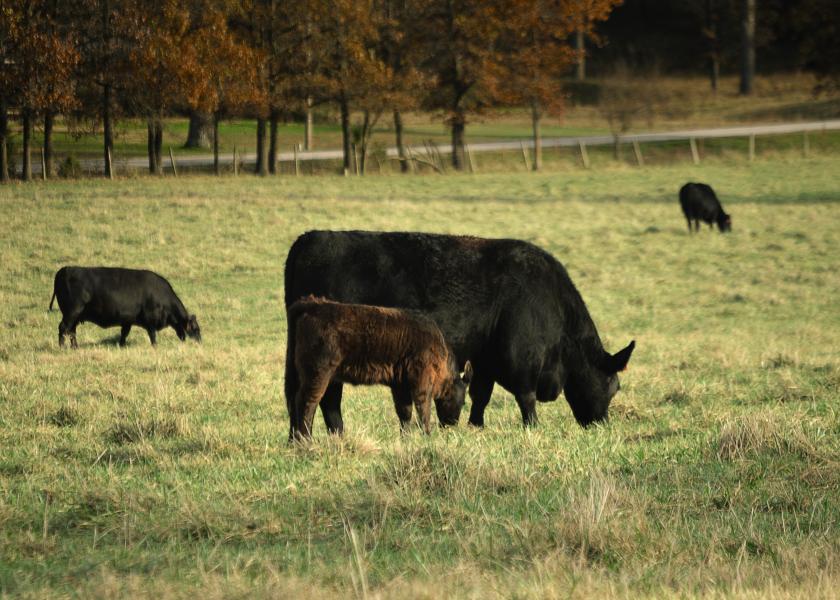Fall Pasture Investments Pay Off Come Spring

Forages are valuable. They’re also the lowest-cost way to keep high-value beef cows in condition and their calves gaining. With favorable cattle economics pointing toward herd expansion on an ever-shrinking number of grazing acres, it makes good business sense for beef producers to grow all the grass they can. And fall is a great time to get started.
“Spring is a season of hustle and bustle. Get the equipment running, plant crops, calve heifers, fix fences — the list seems never-ending,” says Sam Ingram, Range & Pasture field scientist with Corteva Agriscience. “But producers can take steps in their pastures today that can help ease their workload next spring and significantly improve grazing.”
Targeting many biennial and perennial species, such as thistles, horsenettle, knapweeds and tall ironweed, in the fall is an effective, efficient and convenient way producers can protect their grazing resource and get a jump on spring.
“Broadleaf weeds compete for the moisture and nutrients grasses need during the important post-grazing-season fall recovery period,” Ingram says. “Controlling these weeds in fall will help pastures grow faster next spring, along with developing a thick grass cover that can work to prevent future weed infestations.”
Fall advantages
Cooler fall temperatures combined with late-summer rain bring on a flush of perennial regrowth and germinates a new flush of winter annuals and biennial plants, such as musk and plumeless thistles. These lush plants and new seedlings are especially susceptible to herbicide treatments, providing a better return on investment. Ingram recommends choosing a product with residual control. DuraCor® herbicide, for example, will stop weeds into the early spring months.
While regrowth of tough, deep-rooted perennials isn’t as easy to kill as a young thistle rosette, Canada thistle and tall ironweed respond well to fall treatments for other reasons. With winter approaching, perennials begin to move nutrients deep into their root systems for storage. Fall-applied herbicides travel with those nutrients, resulting in excellent rootkill and more complete control, Ingram says.
“Perennial species are great candidates for fall treatment,” Ingram explains. “You can get a lot better control of thistles, dogbane, milkweeds and horsenettle with well-timed fall applications. Late-fall application also can be very effective on seedling biennials, such as plumeless and musk thistle and common burdock, along with winter annuals.”
In most regions, September is the ideal timing for fall treatment, but you can apply herbicides up to the first hard frost. Delaying treatment until after the first frost, but before a hard freeze with visible leaf damage, will help improve control.
“Going with a broad-spectrum herbicide, such as DuraCor, simplifies fall applications,” Ingram says. “One product takes out almost all important annual, biennial and perennial broadleaf species and provides the residual control that gives grasses time to get up and growing in the spring.”
Added benefits
Besides getting effective and efficient control and freeing up much-needed time in the spring, several other reasons help make fall applications a good option for pasture improvement:
• Fall is a less hectic time for custom applicators.
• Most sensitive crops and nontarget vegetation are harvested or dormant, making spray drift and off-target damage less of a concern.
• Cooler fall weather makes applications a little easier too.
Don’t forget CRP
Conservation Reserve Program (CRP) acres that have been sitting idle, and often forgotten, are excellent candidates for fall applications. Whether you’re looking to eventually return CRP acres to production, reenroll them in the program or simply need to do some catch-up on managing those acres, there’s no time like the present to start improving these often out-of-control acres. The same weed control options from Corteva Agriscience Range & Pasture for pasture ground apply to CRP acres.







